Hurricane Hilary Could Impact Disneyland
That’s not a typo. It’s Disneyland in California, and not Walt Disney World in Florida, that is currently in the path of Hurricane Hilary. This covers the storm’s status, anticipated rainfall and winds, likelihood of park closures, and tips for staying dry during rain & preparedness info for staying safe during intense weather.
For those who are visiting Disneyland on vacation, it’s worth emphasizing how exceedingly rare this is. It’s been over 150 years since a Category 1 storm made landfall in Southern California, when a hurricane is believed to have hit San Diego in 1858. The storm caused considerable devastation; estimates indicate that if a similar storm happened in the 2000s, it would have caused several hundred million dollars in damage.
In addition to the San Diego hurricane, four cyclones have brought tropical storm force winds to the southwestern United States: a 1939 tropical storm in Southern California, Hurricane Joanne in Arizona (1972), Hurricane Kathleen California and Arizona (1976), and Hurricane Nora in Arizona (1997). Only the 1939 tropical storm made a direct landfall in coastal California, and it’s estimated that would’ve caused roughly $200 million in damages to the Long Beach area had it happened in 2004.
These property damage estimates are a result of population density and high property values according to researchers, as well as the reality that Southern California construction does not take into account the potentiality of tropical storms or hurricanes. The degree to which storms like this are uncommon and California being unprepared for them is the most salient point here.
This much was actually evident during the wet winter weather in California. The state endured 31 atmospheric river storms in Winter 2023, one of the wettest and coldest in California history. Storms killed people, stranded others, and caused hundreds of millions of dollars in damaged infrastructure. This resulted from rain damage, mudslides, and floods–all due to unprecedented precipitation in California. This was evident even at Disneyland, where rain caused flooding as well as construction damage and delays to the reimagined Mickey’s Toontown.
To put that into context, California’s near-record winter precipitation was still only approximately half of the rainfall Central Florida sees in an average year. Rain that, outside of tropical storms and hurricanes, typically does not have any catastrophic consequences. The not-so-profound conclusion here isn’t that California is “weak” and Florida is “tough” when it comes to rain, but that different places are differently equipped to handle storms. Just as Florida understandably doesn’t have the same readiness for earthquakes or blizzards, usually-sunny Southern California doesn’t have the same storm safeguards.
With that preface out of the way, let’s turn to the forecast from the National Weather Service. According to the NWS, Hurricane Hilary is expected to produce rainfall amounts of 3 to 6 inches, with isolated maximum amounts up to 10 inches, across portions of the Baja California Peninsula through Sunday night.
Heavy rainfall in association with Hurricane Hilary is expected to impact the Southwestern United States from Friday through early next week, peaking on Sunday and Monday. Rainfall amounts of 2 to 4 inches, with isolated amounts in excess of 8 inches, will be possible across portions of Southern California and Southern Nevada.
Rainfall impacts from Hilary within the Southwestern United States are expected to peak this weekend into Monday. Flash, urban, and arroyo flooding is possible with the potential for significant impacts. Hilary is forecast to reach major Category 3 or 4 Hurricane status on Saturday before arriving in Southern California, likely as a tropical storm late Sunday or early Monday.
Hilary has the potential to bring significant impacts to the Baja California Peninsula and portions of the southwestern United States this weekend and early next week, including after it becomes post-tropical. Although it is too soon to determine the location and magnitude of wind impacts, interests in these areas should monitor the progress of Hilary and updates to the forecast.
Los Angeles-area meteorologists are expecting Hilary to lose strength as it gets closer to Southern California, with wind speeds decreasing from 120 mph early Saturday to 70 mph Sunday night and 40 mph by Monday evening.
“We’re tracking what could be the remnants of a tropical storm that could bring some rain, especially Sunday into Monday,” said NBC4 Los Angeles meteorologist Belen De Leon. “It’s going to become a major hurricane, but as it approaches the southwestern part of the United States it’s going to weaken into a tropical storm. The winds are not going to be as strong, but it’s still going to pack a punch.”
Flooding, gusty winds, and high surf are possible throughout the Los Angeles area, but the storm’s track will determine the severity and timing of severe weather. “There’s a possibility for several inches of rain in Southern California,” De Leon said.
Any rain would be a rarity for Anaheim in August, which is historically the driest month of the year. Anaheim typically averages 0.0 inches of rain in August. (Which is why most of my photos below feature Christmas decorations–that’s normally the rainy season, not late summer!) With Hilary, rain estimates are 2 to 4 inches throughout Southern California (including Disneyland Resort), with some inland areas seeing 4 to 6 inches.
How Hurricane Hilary will impact operations at Disneyland and Disney California Adventure is unclear at this point. Bringing this full circle, there were a handful of occasions during the wet winter weather from January to March 2023 that the parks closed a few hours early due to the intense rain.
We’ve visited Disneyland and Disney California Adventure in torrential downpours, including this past winter. Frankly, we make a point of going to the parks when there’s rain in the forecast! Unlike Walt Disney World, where rain has only a negligible impact on crowd levels, it’s a huge deal at Disneyland.
The difference is demographics. Although this has shifted a bit in recent years, Walt Disney World is still fueled by out of state tourists. They’re largely a captive audience who already spent a ton of money on park tickets, hotel reservations, etc. A little rain isn’t going to stop them from visiting.
By contrast, Disneyland is still powered by locals, especially during the winter and fall off-season (which has more or less started now that school districts have gone back into session). Californians are essentially allergic to precipitation, and largely stay home on the rare rainy days.
That might sound tongue-in-cheek, but locals can’t be faulted for this, as rain has outsized impacts in SoCal. To give just one example, the roads tend to be slicker than in other places due to a mix of poor drainage and oil that accumulates on the surface since it rains so infrequently.
There are also a variety of ways that the in-park experience differs from Walt Disney World on rainy days. The biggest is that Disneyland has considerably more outdoor areas, attractions, and queues. Again, this is a result of the typical sunny weather, which makes these design decisions perfectly suitable for the environment (as contrasted with Central Florida).
This means that more rides close when it rains, and you’re more likely to get wet since more is outdoors. Entertainment is also likely to be impacted, with fireworks almost sure to be cancelled (that happens in even a slight breeze!) as well as parades and outdoor atmospheric acts. World of Color, essentially a reverse-rain storm, is usually shown regardless of weather.
In-park flooding is also an issue because, again, Disneyland and Disney California Adventure weren’t built with tropical storms or deluges in mind. Honestly, it’s tough to dub this a way that Disneyland and Walt Disney World “differ,” since the latter have a surprising number of areas that flood. (Lookin’ at you, Tomorrowland!)
Suffice to say, you’ll want to pack ponchos, umbrellas, and shoes that are suitable to wet weather if you’re visiting Disneyland on a rainy day. It’s too soon to say what’ll happen with this storm, as the trajectory of Hurricane Hilary is still uncertain. However, it’s probably a safe bet that Sunday and Monday, August 20-21, 2023, won’t simply be regular rainy days at Disneyland, though.
Without knowing anything more, we’d say it’s probably a safe bet that Disneyland will close early on Sunday night if the storm stays more or less on its current path and pace. There’s likewise a reasonable probability that Disneyland will have a delayed opening on Monday. Depending upon the damage caused by rain and wind, it’s also possible that certain attractions may not open at all. (Jungle Cruise and Tom Sawyer Island being the most obvious candidates.)
In our view, that’s the base case, taking the current forecast at face value and drawing a relatively conservative conclusion. It’s always possible that the storm worsens or weakens. If the latter happens, it might just end up being an atypically rainy couple of days at Disneyland, in which case visitors will likely benefit from lower crowd levels and wait times. We don’t want to engage in fearmongering or doom & gloom about what a worst case scenario looks like. You can probably draw your own conclusions based on a lot of the above.
Ultimately, that’s what we know so far about Hurricane Hilary and the likelihood of the storm having an impact on operations or causing a closure of Disneyland. For its part, Disney has not yet commented on the coming storm; Disneyland unsurprisingly does not have an official hurricane policy like Walt Disney World.
Our expectation is that will change in the coming days. Disneyland will likely informally waive cancellation fees, penalties, and change fees for those who do not want to visit during Hilary, and will presumably issue a statement in the next day or two. We’ll keep you posted about any major developments.
If you’re in Southern California or were planning to visit this weekend or early next week, we’d recommend you continue to monitor the weather forecast. Finally, don’t underestimate the potential impact based on your experience with storms elsewhere; as should be obvious from the forgoing, it’ll be different in California–so be careful and stay safe!
Planning a Southern California vacation? For park admission deals, read Tips for Saving Money on Disneyland Tickets. Learn about on-site and off-site hotels in our Anaheim Hotel Reviews & Rankings. For where to eat, check out our Disneyland Restaurant Reviews. For unique ideas of things that’ll improve your trip, check out What to Pack for Disney. For comprehensive advice, consult our Disneyland Vacation Planning Guide. Finally, for guides beyond Disney, check out our Southern California Itineraries for day trips to Los Angeles, Laguna Beach, and many other SoCal cities!
Your Thoughts
Are you currently at Disneyland or in Southern California? Have you visited DLR on rainy days in the past? Any additional info, thoughts, or first-hand experiences to share about storms at Disneyland? Do you agree or disagree with our advice? Any questions? Hearing your feedback—even when you disagree with us—is both interesting to us and helpful to other readers, so please share your thoughts below in the comments!
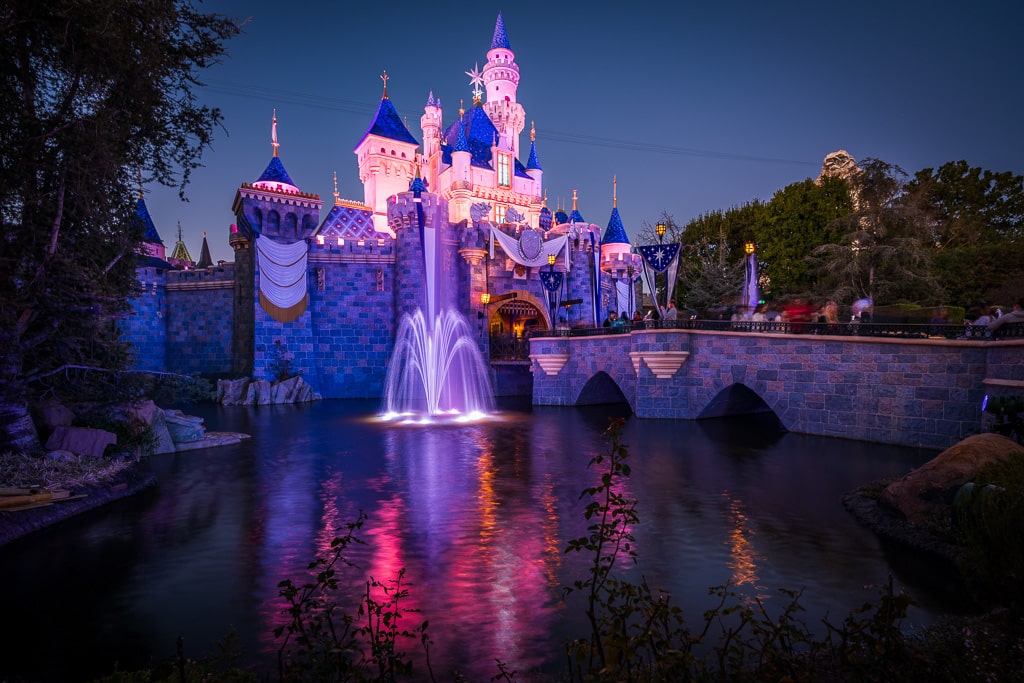
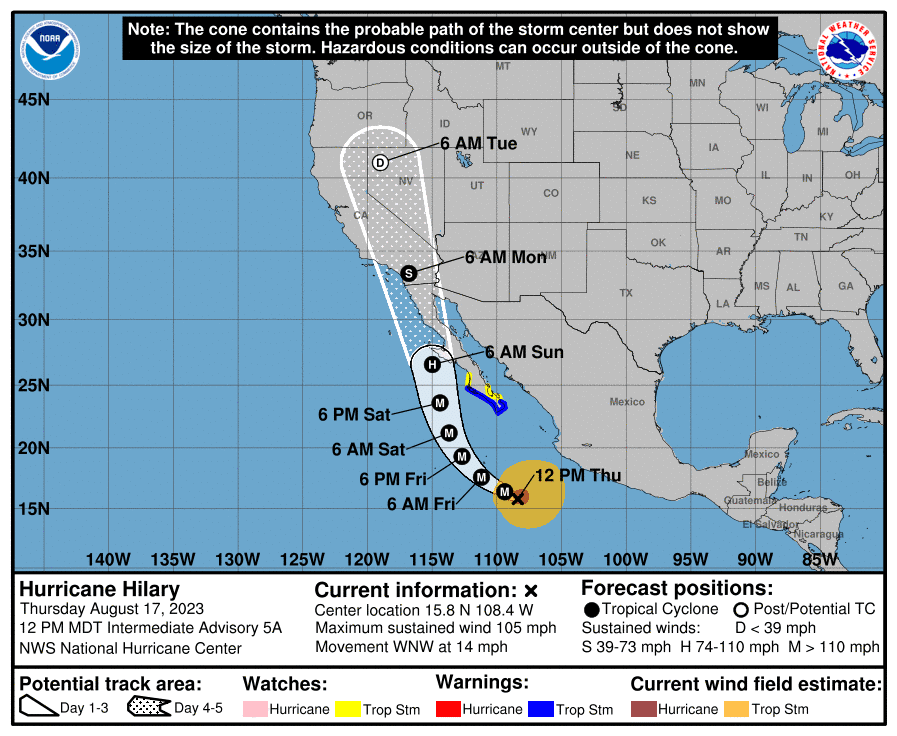
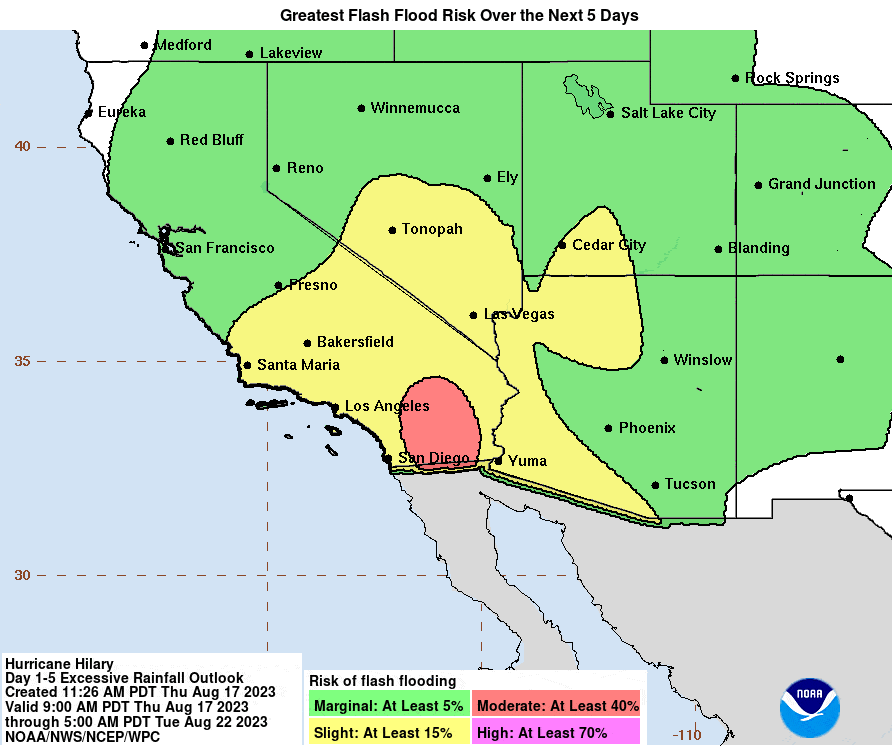
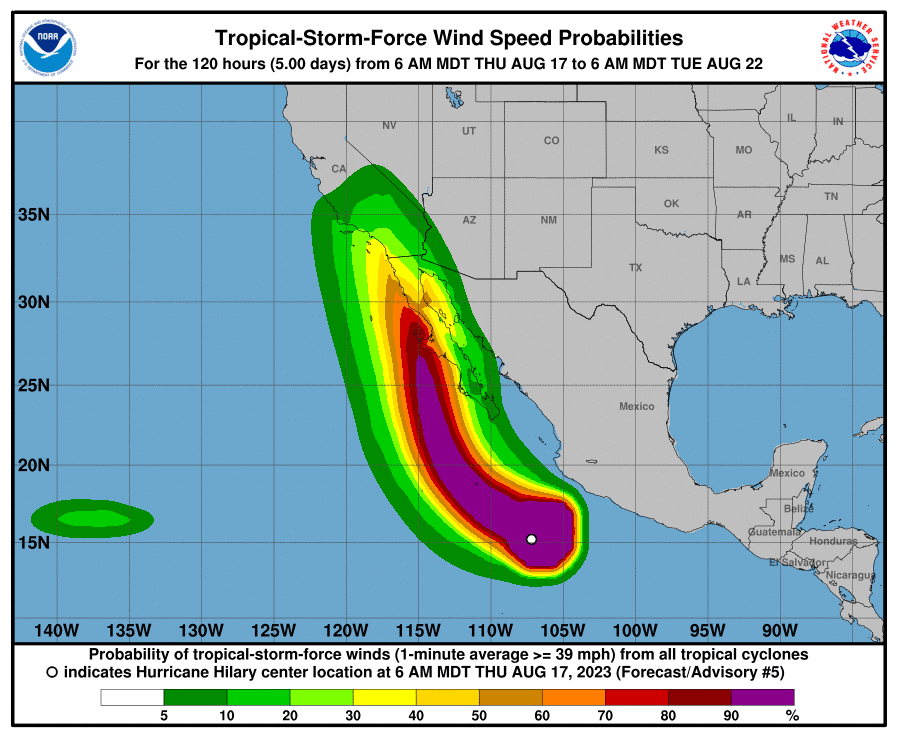
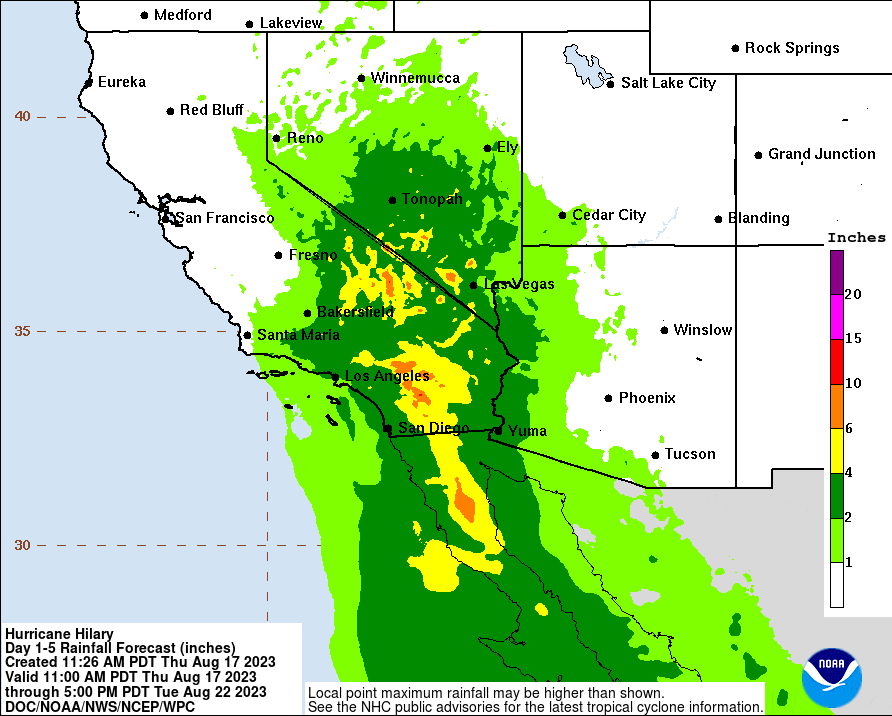
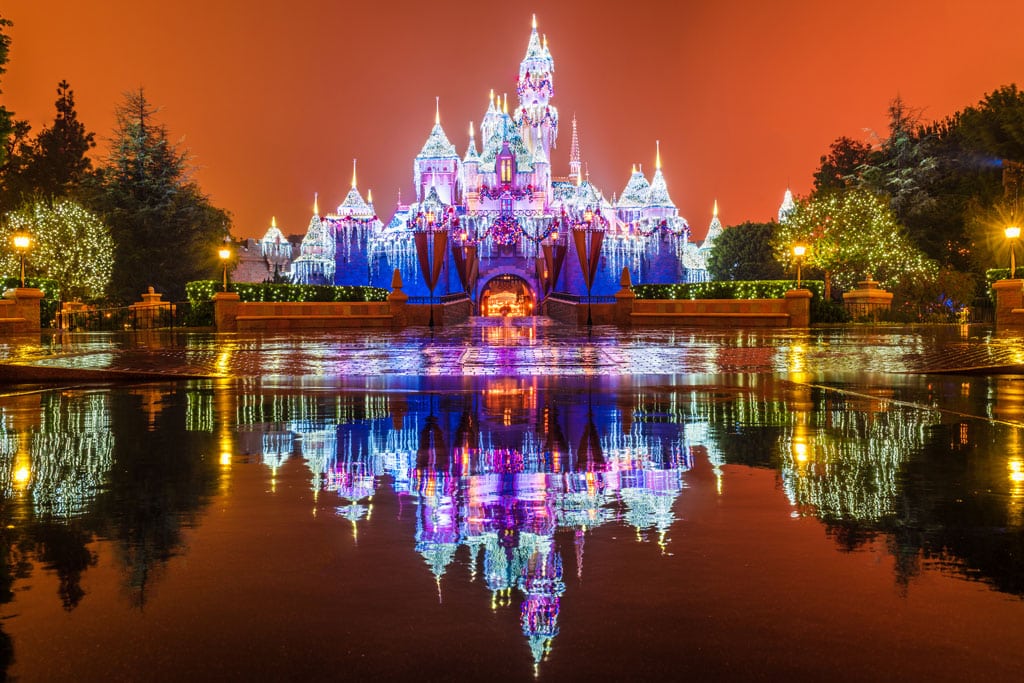
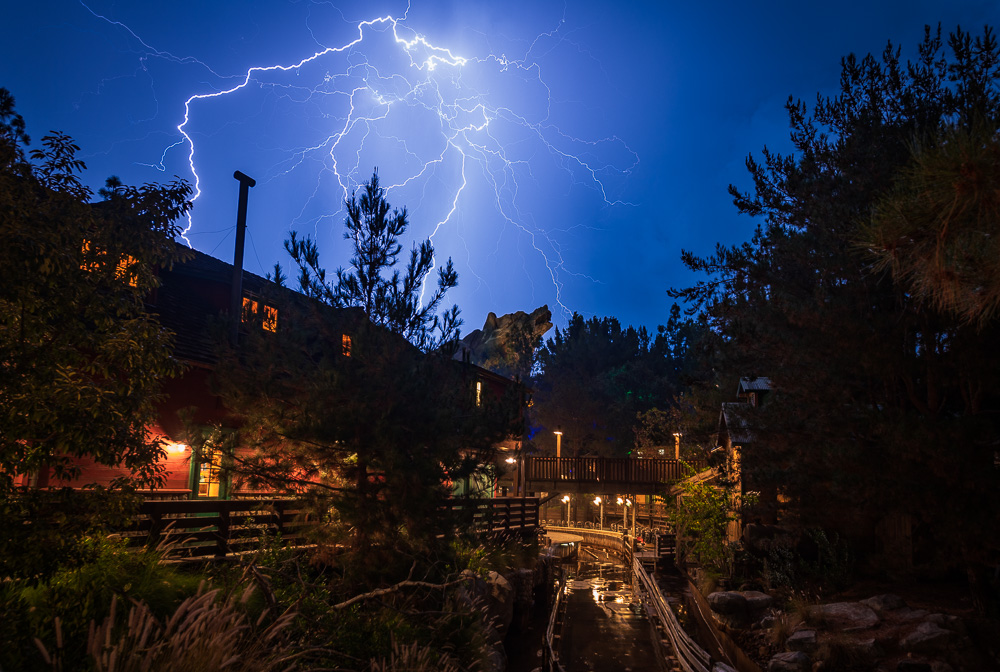
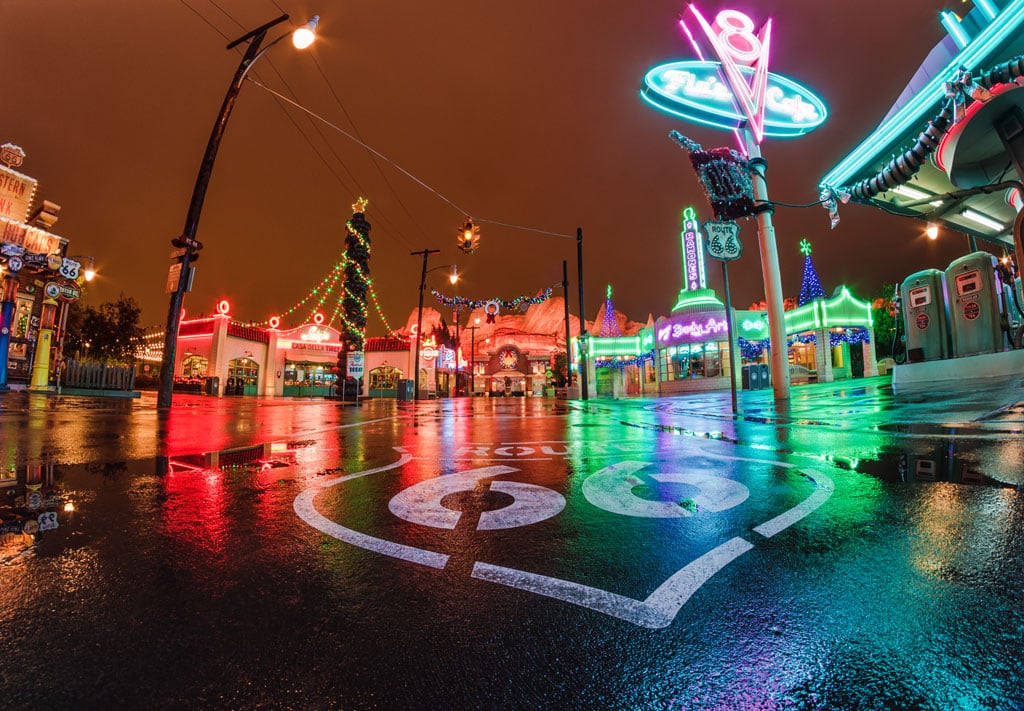
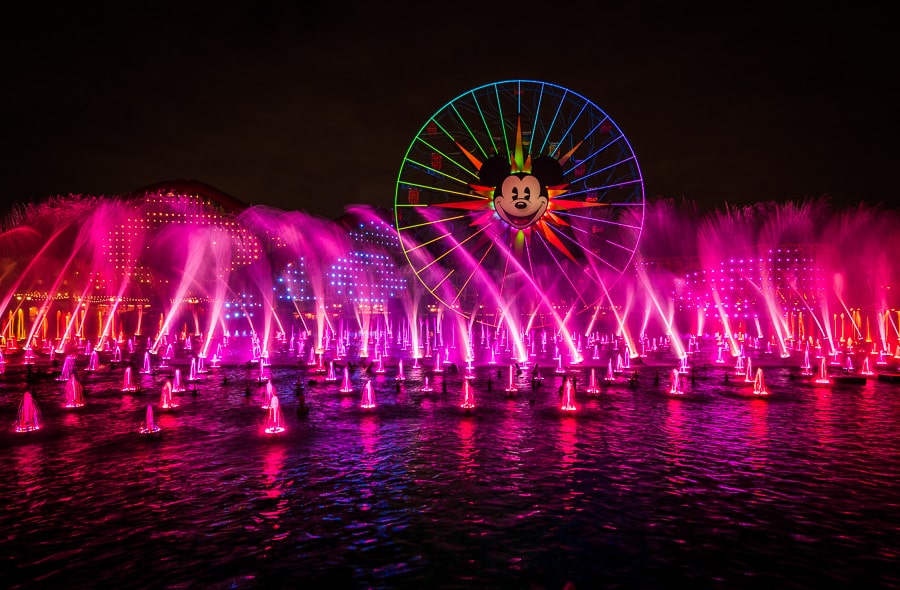
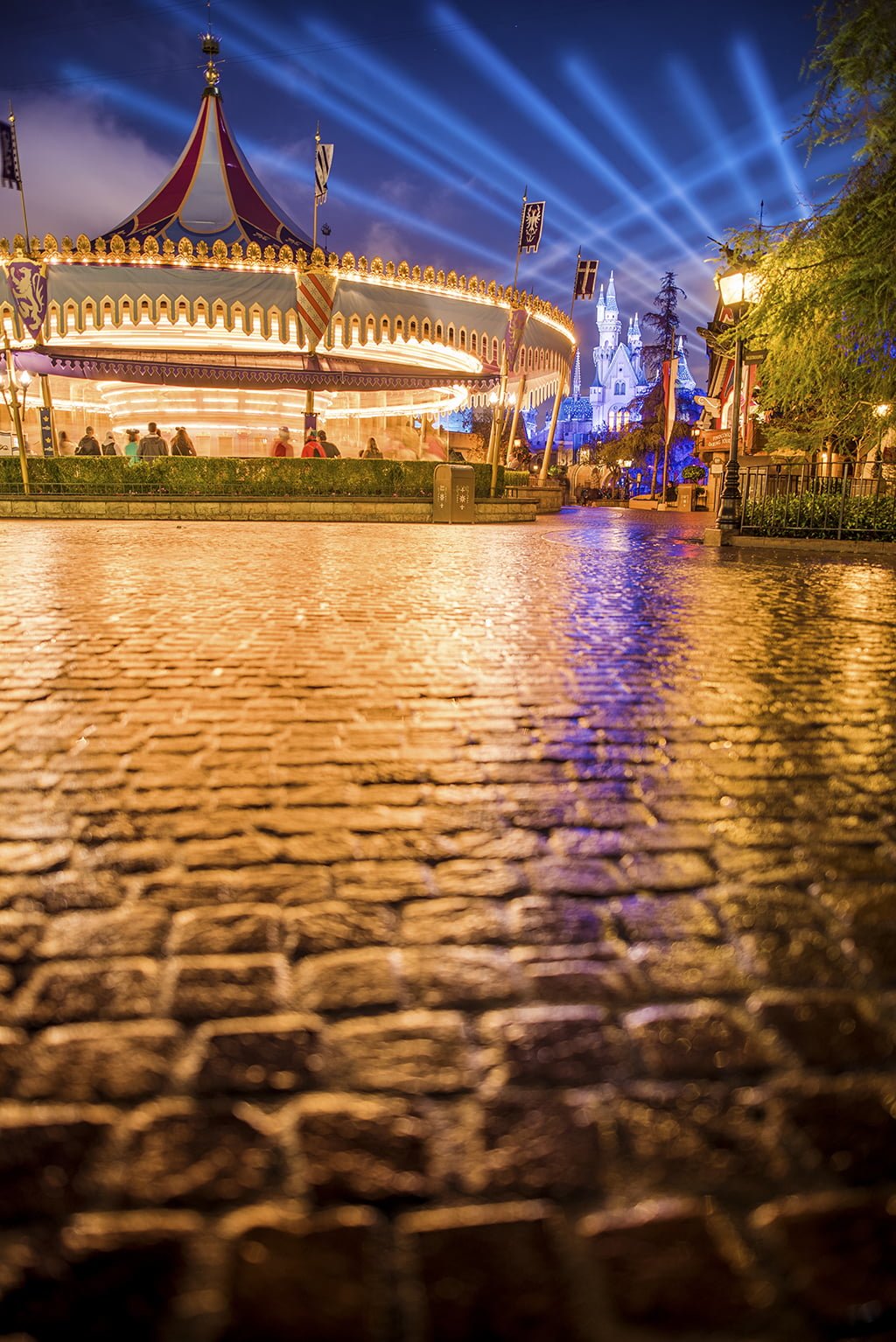

It wouldn’t surprise me, depending on where this puppy turns tomorrow, if Disneyland closed on Sunday. Right now it looks like landfall in Mexico with San Diego taking the brunt for the USA. But if it shifts west then it’s not just the rain LA/Anaheim will have to endure but the winds as well. Vederbands should be felt in the next 24 hours, but certainly keep an eye on the path and stay off the roads if the winds are more than normal on Sunday. I’ve lived smack on the east coastline for over 60 years, so I’m used to all this and stay prepared, but this is not the norm for you guys. What makes things worse for you are your dry periods and yearly fires making the ground poor rain material already. Flooding and Landslides are my fear for you, so I’m sending some prayers that it weakens long before its scheduled too. If you can’t go Saturday then Wait until Tuesday to visit Disneyland.
Hang in there.
This looks to be, by Atlantic & Gulf storms, a minor storm, one that might not even be a tropical storm at the time of landfall. But as Tom so correctly points out, this is not an Atlantic or Gulf storm.
This is still a fair bit off, with the good news being that what is now a major hurricane is expected to be much weaker upon landfall in California. This will be a wind and rain event inland with flash flooding a possibility, and a storm surge event on the coast.
Things to keep in mind:
Storm track and strength. These are the big unknowns right now. The strongest part of a hurricane is the northeast quadrant, aka the upper right portion of the storm. The longer this stays off the coast, the worst it will be for storm surge along the coast. The track difference of a dozen miles can matter. Also, hurricanes wobble as they travel, so the actual path of the eyewall can be different from the straight path presented by the NHC/NWS and local weather broadcasts.
Surge strength. Another unknown. Right now, with 120 mph winds, there is a substantial surge. The question is going to be how fast that dissipates in relation with the weakening of the wind speed of the storm. In 2005, Hurricane Katrina hit land as a Category 3, but it retained the storm surge of the super-strong Category 5 storm it had been 24-36 hours earlier. Pay attention to surge warnings and get away from anywhere that is known to flood. Also storm surge can vary along coasts for a variety of reasons.
Flash flooding. With the snow melt of earlier this year, places that flooded then are more likely to flood again. However, street flooding might be more widespread than that event, it all depends on the rain amount and how fast the system moves. Flash flooding from hurricanes is no joke. Right now, the flash flooding risk is listed as only moderate for an area east of San Diego an LA, with the rest of the region having a slight risk. Slight means at least a 15% chance, moderate means at least a 40% chance. Keep in mind that this means the slight ranges from 15-39% chance, while moderate means a 40-69% chance, with a heavy chance being over a 70% chance. This will likely change as the storm comes closer and the track solidifies.
Wind. Again, this depends on storm strength. Much of the area is exposed to Santa Ana winds which might be of about the same strength, but these winds will come from a different direction, and will shift as the storm passes.
For most people, the reasonable steps to take is to have flashlights with good batteries, a decent supply of water, a few days of nonperishable food, and fill up the gas tanks in case the power goes out (the pumps don’t work without power, of course neither does EV charging). With a full tank of gas, you can run your car for air conditioning relief and to charge/use cellphones, if power fails.
Pay close attention to weather experts and advisories as much will change over the next few days. Keep in mind that if you’re seeing a line or a hurricane, storm or depression symbol, the path of the storm is far wider.
Good luck to everyone!
If Mickey reads your article, please pass on to him that even a little note on their app that says: “Well this is new! We know we have a hurricane coming and we’re watching closely. If your vacation is being impacted, please know that updates are coming. Your SAFETY is important to us, and so out of CURTOUSY, we’re going to keep you informed as EFFECIENTLY as possible.”
It must suck to be a cast member right now in any department as people figure this out and have to rely on articles like this to figure out their plans.
Especially those of us who have flown international to come.
Xoxo We appreciate the facts without the sensation.
Having walked through torrents of rain on the 21st March at Universal I can confirm that the rain can really derail a park as the whole thing went up in a torrent of standing water all over the hill. So definately to be taken seriously because it was so washed out it was getting close to being over the shoes.
If it is just a bit of rain though then its deintely worth going as a tourist. Had a couple of mornings in Disneyland that month where there are pictures of me standing in front of an empty mainstreet and castle as I move between rides. Made touring a lot more efficient and was pretty as disney tries to clear it up quickly.
As a bit of a sidenote I when I was in Tokyo Disneyland in the rain in May the park emptied quickly and seems to be similar to Anaheim in the crowd dynamics-only people left waiting int the 2 hour lines for beauty and the beast (I fastlaned that one).
“As a bit of a sidenote I when I was in Tokyo Disneyland in the rain in May the park emptied quickly and seems to be similar to Anaheim in the crowd dynamics…”
Very similar dynamic, but different core reason–locals don’t want to risk getting stranded if train lines go down for some reason.
We were at TDR in the lead-up to a typhoon once, and there were literally more Cast Members than guests in the parks. Kinda surprised they didn’t close early!
Thanks for this update. As you hint at, I think most people in wetter regions don’t appreciate what even a little bit of rain can do in an arid area, even with good infrastructure. Once in Las Vegas it rained while I was at dinner: even though it was only lightly drizzling, there was water seeping under the doors to the restaurant’s patio. Hopefully nothing too bad will happen to Anaheim, or anywhere in Hilary’s path for that matter.
That’s exactly it. And while it probably won’t be terrible for Anaheim or Los Angeles, it could be devastating to areas of the Coachella Valley if the forecast (4-6″ rain) ends up being accurate.
I used to spend a good amount of time out in Death Valley, and was there one time when it rained. The amount of precipitation would be considered utterly inconsequential by Central Florida standards, but was dangerous and destructive in some areas there because it comes off the mountains, doesn’t drain, and leads to flash flooding.